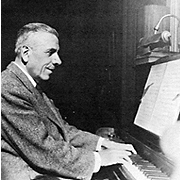Trivia
Oboe masterpieces: chamber music
W.A. Mozart: Oboe Quartet in F major, K. 370
In 1780, Mozart, who was just entering his mature period, was asked by his friend and oboe player Friedrich Ramm to compose this piece. Ramm was known as one of the premier virtuosi of his day, and perhaps because of this, Mozart incorporated rather advanced performance techniques into the piece. This difficulty would seem to be rather formidable even for modern oboists. Another part of the charm of the composition is that the violin, the viola, and the cello never cease to complement the tones of the oboe, sometimes participating in active dialogs with the star instrument.
R. Schumann: Fantasy Pieces, Op. 73
This work consists of a collection of three pieces for the oboe (or the violin) and the piano, composed by Schumann late in his life. The name of the work is taken from the short stories collected under the same title by the master of German Romantic fantasy literature E.T.A. Hoffmann. As the title suggests, the music is full of a sense of fantasy. The plaintive melody of the oboe in the first piece, in particular, entrances the listener and gives superb expression to the world of the German Romantics. Because Schumann originally aspired to be a pianist, he naturally gave the piano a part that rivals that of the oboe in importance.
F. Poulenc: Oboe Sonata
Poulenc composed this work for the oboe and the piano in 1962-one year before his death. It was dedicated to the memory of Poulenc's friend who died in 1953, the composer Prokofiev. Poulenc writes simple, witty, and unconventional music and is a unique presence among 20th-century composers. His uniqueness is clearly present in this sonata. The third and final movement has the title Déploration (Lamentation) and exquisitely expresses the composer's feelings of grief for the death of his friend in the form of music. Because Poulenc was also an active pianist and excelled as a composer in the use of wind instruments, the way he writes for the piano and the oboe is very becoming of him.

Francis Poulenc (1899-1963)
Musical Instrument Guide:Oboe Contents
Structure
How to Play
How the Instrument is Made
Choosing an Instrument
Trivia
- Why does the oboe lead the orchestra in tuning?
- Do the reeds have a front and a back?
- The keys recoil via springs!
- This is how the oboe and the cor anglais differ
- The charumera was the oboe's cousin
- You can reduce time spent breathing using circular-breathing techniques?
- The Wiener oboe that survived an existential crisis
- Oboe masterpieces: concertos
- Oboe masterpieces: chamber music
- What is the alto oboe?
- The heckelphone, which resembles the oboe
- The oboe is the bassoon's cousin
